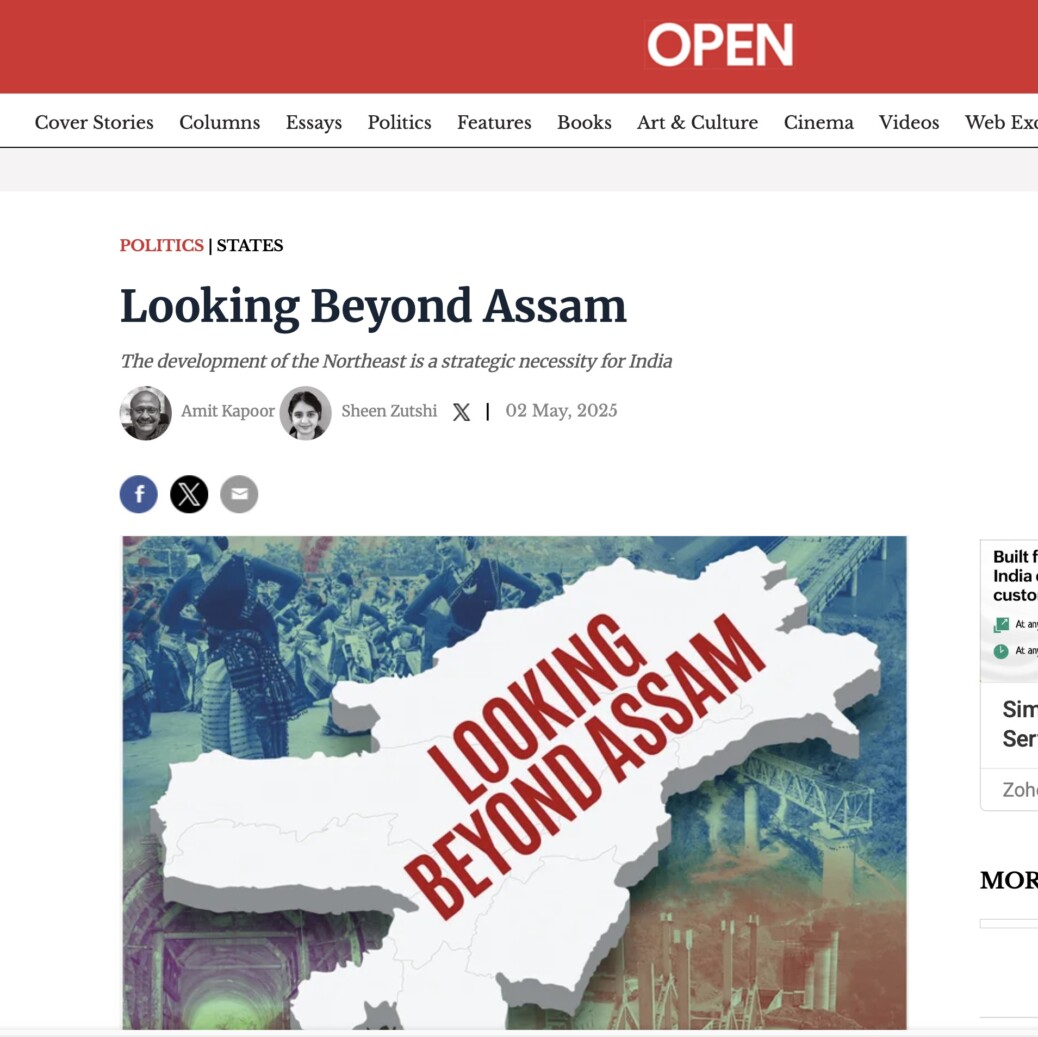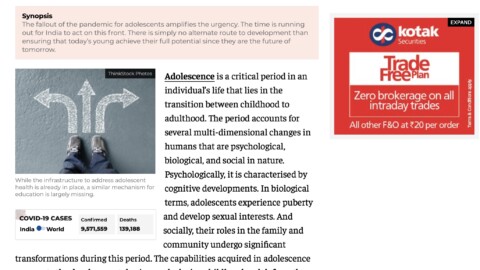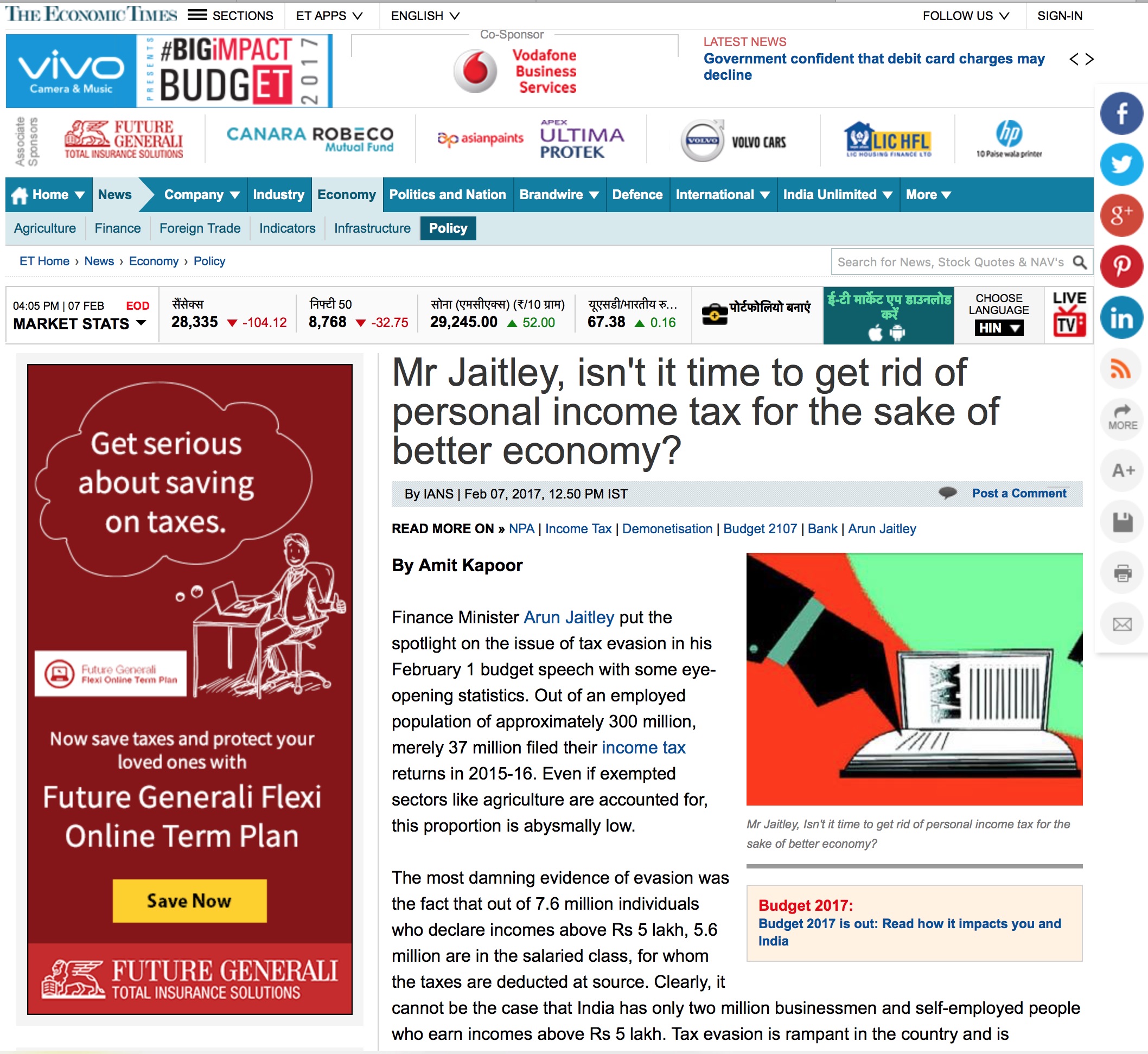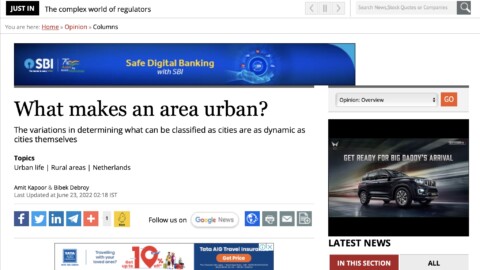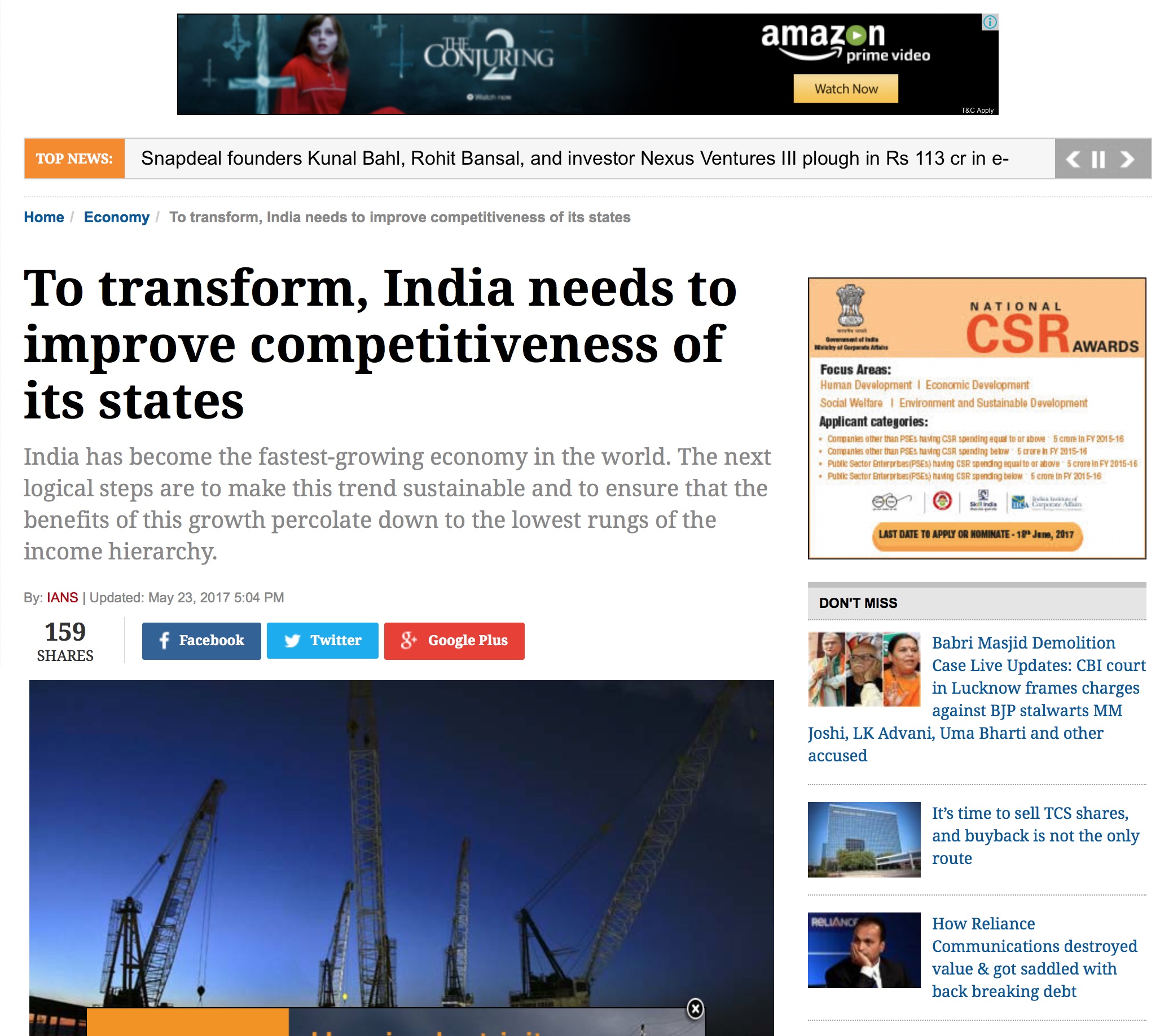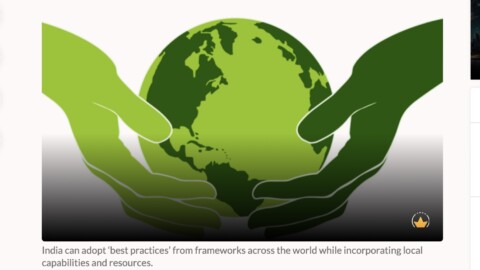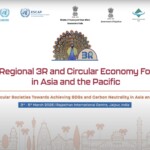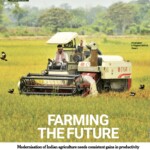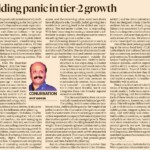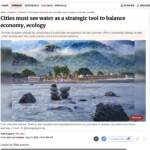North‑Eastern Region’s Transformation: A Strategic Key for India’s Vision for a Developed Country
Northeastern Region (NER) accounts for 7.97 per cent of the country’s geographical area and 3.78 per cent of its population. With Assam accounting for around 63 per cent of the North‑East’s gross domestic product, each of the surrounding hill states contributes barely 4‑9 per cent, reflecting regional disparity, which is a result of various factors such as steep terrain, chronic connectivity hurdles, smaller markets, and years of insurgency that discouraged private investment. The region has historically been at the lower end of social and economic development.
The NER is abundant in natural resources, featuring fertile agricultural land, vast forests, and rich mineral deposits. These resources vary significantly by state, contributing to each state’s distinct economic profile. Therefore, concentrated efforts are needed to unlock the benefits of overcoming such a wide intra‑regional gap within the “landlocked region,” which has been absent for decades. This underscores the need for focused logistics links, sector‑specific value chains, and security‑led confidence‑building to spread growth more evenly across all eight states.
The decade from 2014 to 2024 can be regarded as a transformative period of delivery and progress for India’s North-Eastern Region. The shadow of insurgency that once defined the region has dramatically receded in recent years. A concerted effort has also been made to scale down the Armed Forces Special Powers Act (AFSPA) from the NER regions. Connectivity, which remained one of the perennial constraints on the region’s growth, has received significant, unprecedented capital. Indian Railways has 18 projects, costing ₹74,972 crore, under execution in the North‑East Frontier zone; annual railway outlays for the region have risen from ₹2,122 crore (2009‑14 average) to ₹10,376 crore in 2024‑25, while average new‑track commissioning has almost tripled.
Since 2014, the NER has witnessed a notable improvement in GDP per capita, substantially aided by the Government of India’s mandate to allocate at least 10% of Gross Budgetary Support (GBS) to the region. This focused investment has enhanced infrastructure and connectivity and strengthened social welfare programs, fostering steady economic growth. States such as Mizoram and Sikkim have registered Compound Annual Growth Rates exceeding 6%, while Tripura and Manipur also exhibit upward trends.
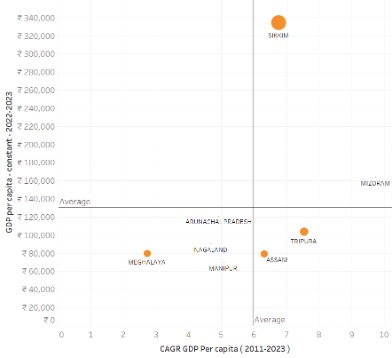
Source: EPW MOSPI database
Despite their modest share in India’s GDP, several North‑Eastern states consistently outrank most states and UTs on the Social Progress Index. Higher performance on the Social Progress Index means that a region is doing well in providing for its people’s basic human needs, ensuring access to education and healthcare, and creating a supportive environment for personal freedom, safety, and opportunity, regardless of economic performance.
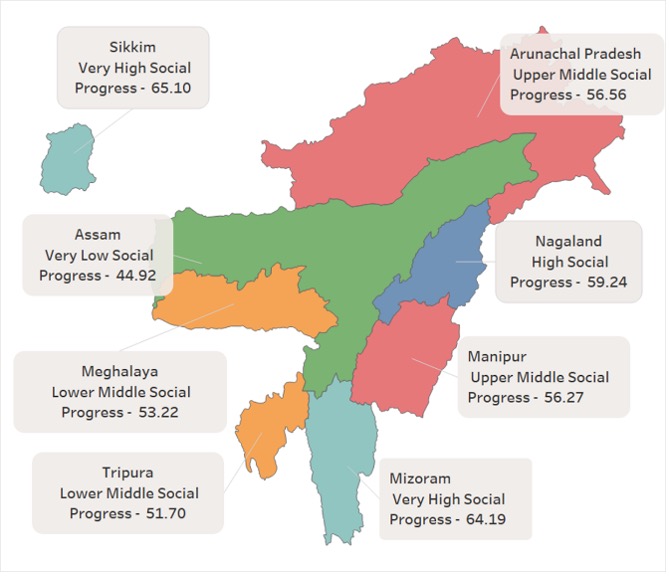
Source: Social Progress Index – EAC-PM
While various measures have been taken to achieve progress on social and economic fronts, the underutilization of funds has always been seen as a primary concern for the NER region. 10 % GBS of Central Sector and Centrally Sponsored Schemes (CSS) for the North-Eastern Region has been the centre of this change. As per the policy of the Government of India, 54 non-exempt Central Ministries/ Departments are required to allocate a minimum of 10 per cent of their GBS of Central Sector and CSS for the Northeastern region.
Since 2014, the Government of India’s budgetary allocations to the NER have exhibited a marked and consistent upward trajectory, reflecting a deepened commitment to inclusive growth and balanced regional development. GBS under Budget Estimates (BE) for NER has substantially increased, from about ₹36,108 crores in 2014-15 to nearly ₹1,00,893 crores in 2024-25.
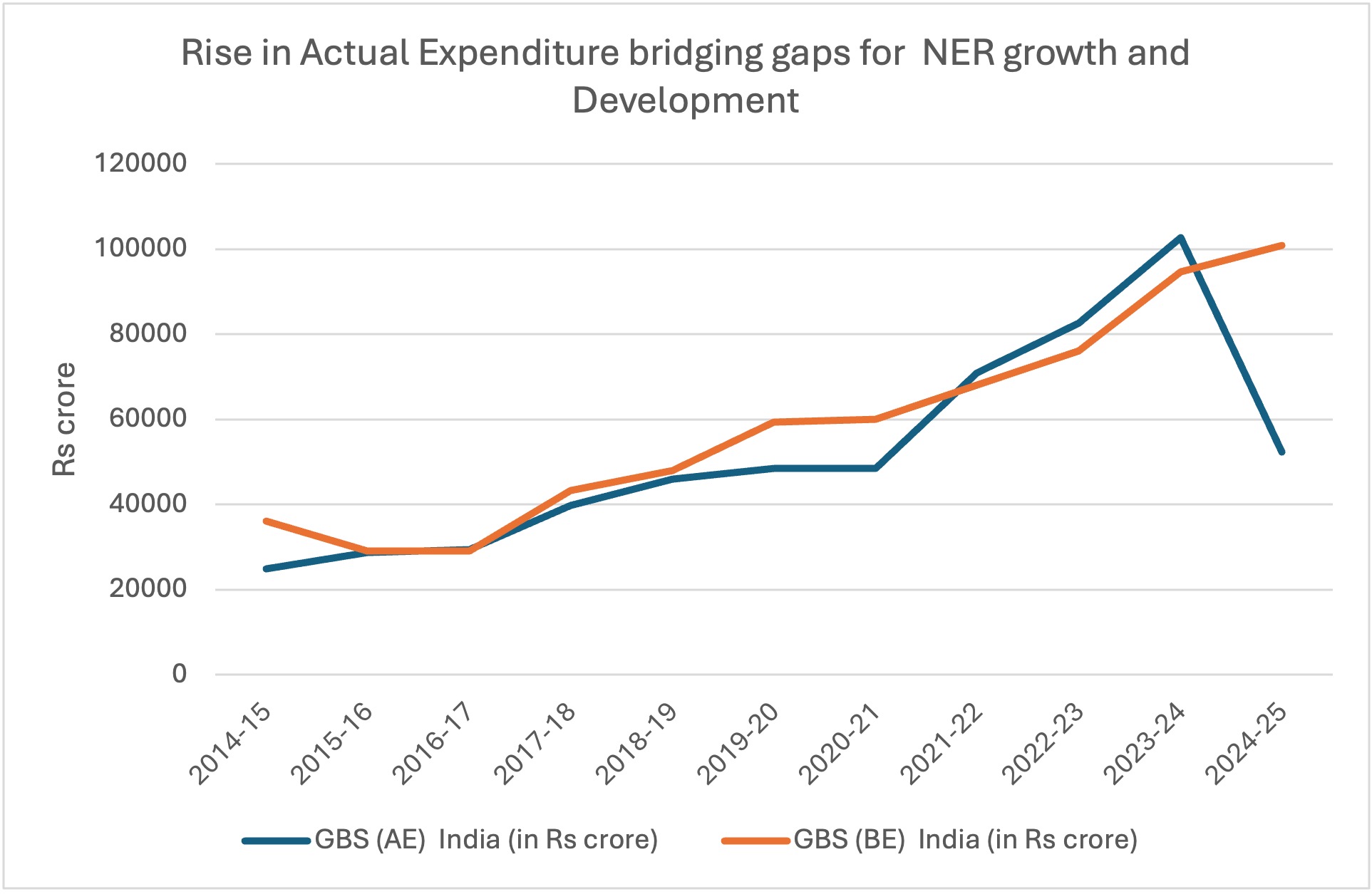
Source: PIB, MDoNER
The Actual expenditure under the mandatory 10 percent GBS provision for the eight northeastern states totalled ₹24,819 crore in 2014-15. By the financial year 2023-24, this amount had increased more than four times to ₹1,02,749 crore, resulting in cumulative spending of ₹5.74 lakh crore since 2014-15. Specifically, such an expansion in fiscal outlays underscores the government’s strategic priority for the socio-economic transformation of the country’s northeastern states. When studied carefully, we find that the annual GBS actual expenditure for the northeastern region has surged from approximately ₹29,000 crore in the first three years of the decade to well above ₹90,000 crore in the last three years. This has been driven by reforms that have translated higher allocations into higher absorption. First, 54 non-exempt central ministries are monitored quarterly to ensure that earmarking aligns with actual disbursements. Second, the Poorvottar Vikas Setu and GBS online dashboards provide state governments and Delhi with a common, near-real-time view of sanctions, releases, and utilization, significantly reducing delays caused by paperwork. Third, regular ministerial visits over 723 since 2015 have established detailed feedback loops that enable timely course corrections before projects face delays.
Moreover, today, the North‑Eastern Region (NER) sits at the intersection of Japan’s “Free and Open Indo‑Pacific,”ASEAN’s connectivity agenda, and the multilateral climate‑finance circuit. India’s partners, from Japan to Thailand, have recognized the region’s strategic value, pumping substantial capital into ambitious infrastructure projects. The ongoing construction of the Dhubri-Phulbari bridge, India’s longest river bridge at 19 km, supported by Japan, underscores how infrastructure is shrinking the region’s distances. What once took eight hours will soon be a 23-minute drive. This bridge is symbolic: the Brahmaputra, historically seen as a barrier, is now becoming a connector, not just across Indian states but between India and its eastern neighbours, including Bangladesh. Meanwhile, Thailand’s partnership via the India–Myanmar–Thailand Trilateral Highway signifies deeper regional integration, ensuring the Northeast moves closer to ASEAN markets.
Along with other countries, the Asian Development Bank (ADB) has emerged as a pivotal partner in strengthening India’s Northeastern Region as a reliable trade, connectivity, and clean energy corridor. Two initiatives exemplify the transformation in the region that started within the past three years. The first initiative focuses on enhancing road connectivity infrastructure to facilitate market access. In December 2022, the ADB approved a loan of $300 million dedicated to the improvement of over 300 kilometers of state highways and major district roads in Assam. This project involves widening six critical links throughout the state’s western, central, and southern regions from single-lane to double-lane configurations. The upgrades will incorporate climate-resilient and disaster-responsive design features, ensuring alignment with the South Asia Sub-Regional Economic Cooperation (SASEC) corridors that approach the borders with Bhutan and Bangladesh. Additionally, the project includes the development of pedestrian facilities, elevation of highways in flood-prone areas, and measures to prevent landslides in hilly regions. By complementing the upcoming multimodal logistics parks in Jogighopa and Silchar, this initiative aims to reduce travel time, enhance cross-border freight capabilities, and extend essential social services to previously underserved and isolated communities.
Another initiative focuses on clean energy, as ADB approved a second, $434.25 million loan in October 2024 to construct a 500 MW grid-connected solar photovoltaic facility with battery storage in Karbi Anglong. The project supports Assam’s aim to reach its target of 3000 megawatts of renewable capacity by 2030. It strengthens the state’s PPP framework for an additional 250 MW plant and modernises rural distribution lines to ensure reliable last-mile delivery. By decarbonising daytime supply and smoothing peak hour volatility, the investment lowers fuel imports and frees fiscal space for further social spending. Assam is also already home to India’s first bio-refinery, which produces fuel-grade ethanol from bamboo biomass. The facility plans to use bamboo as feedstock and is expected to produce 50,000 tonnes of ethanol, 16,000 tonnes of furfural, and 11000 tonnes of acetic acid annually.
Together, all these efforts exemplify a new, integrated development model that can focus on climate-resilient infrastructure with clean energy‑
India’s pursuit of strengthening the NER region requires that the development model place the Northeast’s cultural wealth at its core. The integrated model, which respects the diverse traditions, languages, and knowledge systems of the “Seven Sisters” (Assam, Arunachal Pradesh, Meghalaya, Manipur, Mizoram, Nagaland, and Tripura) and “Brother” (Sikkim), is not being sidelined but celebrated as assets that inform together sustainable growth and development practices. The results are beginning to show; however, the urgent need is to diversify exports beyond traditional commodities and increase investment in education, health, and employment opportunities. This should not come at the expense of the ease of living for the people living in the Northeast region.
While challenges remain, especially in ensuring equitable distribution of benefits within the NER states due to their unique geographical constraints, the region’s journey should reflect India’s overarching goals, particularly the 4S principles i.e. ensuring prosperity is accompanied by Social progress, shared equitably across all eight states, environmentally Sustainable through innovative ecological practices, and Solid amidst geopolitical tensions and external disruptions creating an antifragile development model that honours the region’s unique cultural and natural wealth.
The article was published with Open magazine on May 2, 2025.
